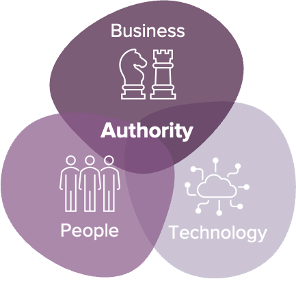In the rapidly evolving landscape of digital transformation, companies face continuous pressure to deliver projects faster, more efficiently, and with sustainable value. At Xebia, we position ourselves as authorities like domain experts or high-class developers and specialists in solving the most challenging customer problems. Our origin and core strength lie in addressing complex technological challenges for our clients. However, customers need more than just technological expertise; they require solutions that scale effectively and are readily adoptable within their digital transitions. Therefore, Engagement Management at Xebia is not merely a methodology; it's our commitment to creating sustainable, scalable value for every customer engagement.
Fundamentals & Definitions

Engagement Management refers to a structured approach to planning, executing, and controlling projects, fostering deep engagement among customers and internal teams. Technology alone doesn’t guarantee success, so our approach integrates technical challenges with business objectives and considers the human factors critical for adoption and scaling.
Our framework, the Xebia Engagement Management Framework, ensures this balanced approach is consistently applied across all engagements, combining domain expertise with methodologies like PRINCE2 Agile, Prosci, and Lean Change, enriched by decades of transformation experience. It establishes standardized processes that ensure consistency, predictability, and reliability, thus allowing each engagement to leverage proven practices tailored to unique client needs.
The Role of Engagement Managers
Engagement Managers at Xebia utilize the Xebia Engagement Management Framework to clearly define project scopes and outcomes, manage resources efficiently, facilitate transparent communication, proactively identify and mitigate risks, and uphold consistent quality standards. Their role is crucial in ensuring projects align with strategic business goals, deliver measurable value, and engage every stakeholder effectively, including managing the organizational dynamics that arise during transformation.
Engagement Managers act as facilitators between technical teams and business stakeholders, translating complex technical challenges into clear, strategic conversations. By building this bridge, they ensure mutual understanding, fostering trust and collaboration throughout the project lifecycle.
Engagement Managers ensure transparent reporting, forward-looking planning, and maintain customer control over project goals, phases, and budgets. Clear communication and actionable insights empower stakeholders, technical and non-technical alike, to effectively monitor progress, make informed decisions, and achieve measurable outcomes. While focusing on project deliverables, Engagement Managers also recognize the human impact of change to ensure new solutions are adopted effectively and deliver lasting benefits. By abstracting complexity to simplify stakeholder understanding, they facilitate confident decision-making and realistic planning.
Flight Metaphor: Pilot, Steward and Flight Tower
To illustrate the role of Engagement Managers, consider the metaphor of a flight journey. The Engagement Manager acts as the steward, guiding passengers through every step of their journey. They take care of the passengers' preferences, manage their luggage – which symbolizes past experiences and lessons learned – and clearly communicate safety procedures, analogous to proactive risk management in a project context. Like stewards updating passengers on flight progress, Engagement Managers provide regular updates and keep stakeholders informed and reassured.
The pilot represents the Project Manager, responsible for navigating the plane and ensuring the flight reaches its destination safely and efficiently. The pilot focuses on operational execution, detailed planning, and technical direction, managing day-to-day project activities.
Overseeing the entire flight is the control tower – the project sponsor – who defines the destination, approves course changes, and ensures the project remains aligned with the business’s strategic goals.
Importantly, these are roles rather than fixed positions – any consultant can fulfil these responsibilities. The critical aspect is ensuring that individuals clearly understand and diligently carry out their respective tasks, apply the best practices defined within the Xebia Engagement Management Framework, and collaborate closely. Together, the steward (Engagement Manager) and pilot (Project Manager) ensure a seamless journey, keeping stakeholders confident, informed, and empowered to make critical decisions effectively (specially the Project Sponsor in the Flight Fower).
Use Cases & Best Practices
Our framework applies proven best practices, combining agile principles with real-world transformation insights. Critical success factors include transparent communication, clear documentation and tracking of milestones, strong client collaboration, and integrated tools for real-time insights. Rigorous adherence to continuous improvement empowers teams to adapt rapidly and effectively to emerging challenges and opportunities.
Practical Example: A Typical Client Project
Consider a mid-sized organization undertaking a cloud migration:
- Kick-off, Scoping and Alignment: Initial workshops clearly define project objectives, KPIs, and outcomes using our framework elements, ensuring alignment across all stakeholders. This step also ensures that the right business goals are met, correctly measured, and confirms that the offered scope remains aligned with these goals.
- Value Driven Development: Projects are executed using agile frameworks – using Scrum, Kanban, Scrumban, or tailored hybrids – with stand-ups, feedback loops, and open communication channels to maintain alignment and agility. These practices enable the team to respond swiftly to feedback and changing requirements. Additionally, asynchronous and modern communication channels and tools are set up from the beginning to ensure seamless collaboration across all participants, regardless of time zones or roles.
- Risk Management and Transparency through Reports: Proactive risk assessments and transparent communication ensure stakeholders are well-informed and in control, preventing surprises and fostering trust. At a minimum, checklists are used to cover all relevant topics and to ensure that nothing essential is missed throughout the engagement. Frequent reporting is established to maintain budget control and to document important decisions transparently throughout the project lifecycle.
- Adoption and Scaling: Post-implementation training, monitoring, and measurement ensure sustainable adoption and continued value creation, embedding solutions deeply into the client’s operational fabric. At the end of the engagement, structured feedback is gathered to ensure no gaps remain after project completion.
Structured Implementation Recommendations
Implementing our Engagement Management framework involves:
- Clearly defining roles and responsibilities across project teams and stakeholders to ensure accountability and transparency.
- Choosing suitable methodologies and tools (e.g., Jira, Azure DevOps, collaborative platforms) that facilitate real-time tracking, transparency, and effective collaboration.
- Engaging stakeholders continuously through workshops, retrospectives, and regular feedback sessions to ensure alignment and continuous learning.
- Promoting a culture of transparency, accountability, and continuous learning, reinforcing a proactive mindset focused on collective success.
- Training teams extensively in agile methodologies, lean governance, and change management practices, equipping them to handle complex projects effectively.
Benefits of Structured Engagement Management
Effective engagement management brings multiple benefits:
- Sustainable Value: Ensuring alignment with strategic long-term goals and embedding solutions into client operations.
- Employee Satisfaction: Clearly defined roles, responsibilities, and transparent processes significantly reduce burnout and enhance team motivation and productivity.
- Customer Success: Consistent, high-quality outcomes enhance customer trust, satisfaction, and long-term relationships, creating opportunities for growth and repeat engagements.
- Risk Reduction: Early identification and proactive management of risks substantially lower potential negative impacts, securing predictable outcomes.
Conclusion & Outlook
Mastering Engagement Management is essential for navigating today's complex digital environments. By embedding our structured framework into every engagement, from small to large, Xebia ensures that projects are technically sound and strategically aligned, effectively solving customer problems, driving user adoption, and ensuring measurable outcomes.
Our holistic approach – uniting technology, business goals, and human factors – ensures that each engagement carries the distinctive Xebia signature: expert solutions, measurable value, and lasting adoption.






